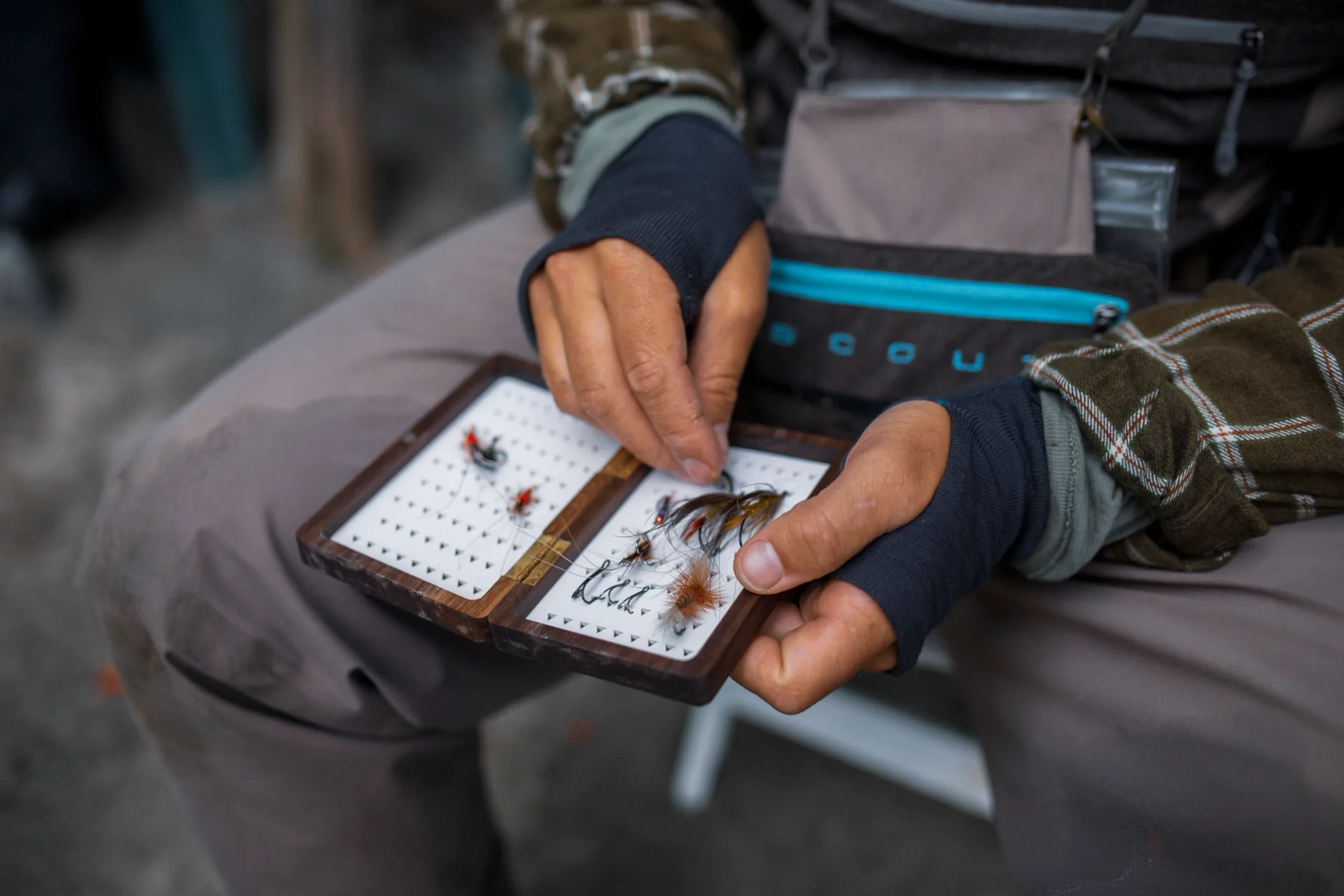On the Fly with Roy Ole

An exclusive interview with fly-tying pro Roy Ole Jakobsen.
Not all hook sets call for a dramatic ego-fest; in fact, a more measured response often yields better results. In such scenarios, Mustad’s AlphaPoint® technology provides the ideal hook design, by creating a sharper, slimmer point that benefits the more finesse-oriented presentations.
Boasting a point that is 4.8 times the wire diameter, AlphaPoint hooks achieve greater penetration with less hook set pressure. This technology serves a variety of angling techniques, with fly fishing one of the best examples.
For insight into one of the key applications for AlphaPoint hooks, we turn to Roy Ole Jakobsen, a Norwegian fly tying master. Raised in a small wooded valley close to Lake Mjøsa (Norway’s largest) and near Mustad’s factories in Hunndalen, Jakobsen now makes his home in Raufoss, a couple of miles south of Hunndalen.
Tracing his fly tying and fly fishing back to age 12, Jakobsen recently shared his insights.
Where do you fish?
“I fish both river and lakes. It all depends on where the hatchery is. But early in the year, often in the middle of March, I start fishing in a river that is nearby. This river comes out of the mountains (water dam), so this water is some degrees warmer than other rivers.
“Later on when the snow is almost gone, in early of May, I start fishing in my local river for brown trouts, and the small olive Baetis Rhodani start hatching in this river. This is maybe the ‘start’ of the real season.”
Jakobsen expands as warming weather and, eventually, ice-out allows. Following the various hatches on foot or in a belly boat keeps him on the fish. One of his seasonal faves: Summer night fishing on Norway’s Rena River when caddis fly pupa hatch during the darkest hours.
What is your preferred tackle?
Most of the time, Jakobsen’s using a #5 rod, as Norwegian weather often requires more power to punch through the wind. Also, his catch-and-release tactics call for a rod that’ll subdue a fish without exhausting it and impeding its survival. In his local river, where fish run smaller, a #3 rod fits the narrow playing field. The lighter rod increases the fun, but it’s usually sufficient to quickly capture a fish.
Jakobsen mostly uses floating lines with a weight-forward “head” length appropriate to each scenario. Fishing lakes in a belly boat, he has plenty of space for overhead casts, so a long headed line works best. In narrow river scenes with forested shores, a shorter head better facilitates the roll cast, or spey cast technique.
“My leader setup is reasonably simple. I use a 4.5 meters tapered 3x line, then a split-ring. This allows me to easily add my tippet and change when needed. In some of my mountain rivers, the water is gin clear, so a long leader is needed.”
How do Mustad’s AlphaPoint hooks benefit your fishing?
With fly selection varying with seasonal insect hatches, Jakobsen uses a selection of midges (size 12-20), mayfly parachutes and different emergers. His most common hook, the Mustad R50 fly hook, provides requisite strength throughout the size range, along with a spacious gap and efficient hook point alignment.
Jakobsen also likes the Mustad C49 fly hook, often balancing the weight with strategically selected materials for maximum dry fly strength. Elsewhere, he uses the strong Mustad R75 fly hook for his streamers and the C47 for small baitfish patterns.
“Mustad gives me the hooks that I need for my fly tying. The new stealth colored hook from Mustad is exciting. It looks so smooth in my eyes. No shiny hook parts that can scare the fish.
“The change to the AlphaPoint helps when hooking up the fish — shorter barb, sharper point. I do think this is a game changer for hooking up fish, and not losing them.”
